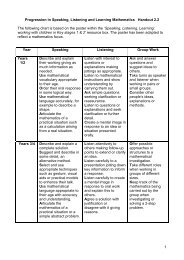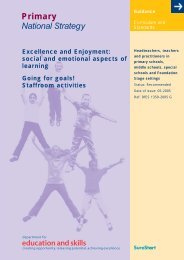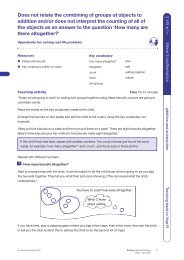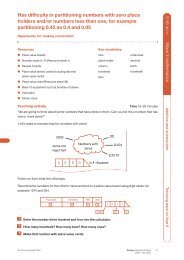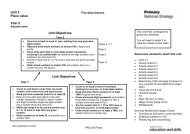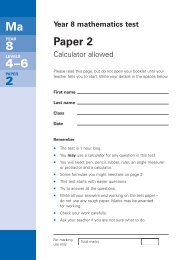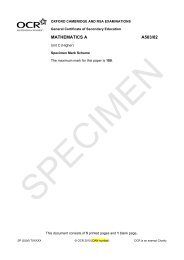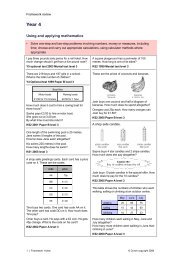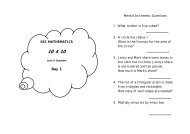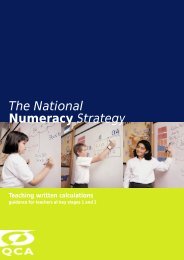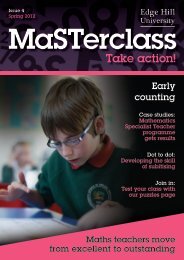Year 3 Block A: - Suffolk Learning
Year 3 Block A: - Suffolk Learning
Year 3 Block A: - Suffolk Learning
Create successful ePaper yourself
Turn your PDF publications into a flip-book with our unique Google optimized e-Paper software.
9 of 20 The National Strategies ⏐ Primary<strong>Year</strong> 3 <strong>Block</strong> A: Counting, partitioning and calculating<strong>Year</strong> 3 <strong>Block</strong> A: Counting, partitioning and calculatingUnit 2<strong>Learning</strong> overviewContained in this learning overview are suggested assessment opportunities linked to theassessment focuses within the Assessing Pupils’ Progress (APP) guidelines. As you plan yourteaching for this unit, draw on both these suggestions and alternative methods to help you togather evidence of attainment or to identify barriers to progress that will inform your planning tomeet the needs of particular groups of children. When you make a periodic assessment ofchildren’s learning, this accumulating evidence will help you to determine the level at which theyare working. To gather evidence related to the three Ma1 assessment focuses (problem solving,reasoning and communicating) it is important to give children space and time to develop theirown approaches and strategies throughout the mathematics curriculum, as well as through theapplication of skills across the curriculum.In this unit the illustrated assessment focuses are:• Ma1, Communicating• Ma2, Numbers and the number system• Ma2, Operations and relationships between themChildren continue to count on or back from any number. They know what each digit in a threedigitnumber is worth and recognise and explain the effect on the digits as they count in 10s or100s and the impact of crossing boundaries when moving between 10s and 100s, and between100s and 1000s. Children use their knowledge of the relationship between numbers on anumber line to round any two-digit number to the nearest 10 and any three-digit number to thenearest 100.Children use the vocabulary of estimation and approximation. They estimate the number ofitems in a container with up to 100 items, for example, saying that the number of items is about35 or that there are between 30 and 40. They use rounding to work out, for example, that to buyfour 22p oranges the cost will be a bit more than 80p and count up in 20s and 2s to get theanswer.Children recognise the significance of each digit when adding and subtracting. They continueto add and subtract multiples of 10 and 100 and extend this to adding and subtracting nearmultiples.They work out, for example, 632 + 200 and 632 – 200, and then use their answers tofind 632 + 199 and 632 – 201, making notes or identifying the steps on an empty number line.Children derive sequences in calculations such as 32 – 1 = 31, 32 – 2 = 30, 32 – 3 = 29 … andcorresponding sequences such as 320 – 10 = 310, 320 – 20 = 300, 320 – 30 = 290 … Theydescribe the patterns they observe and apply them to other sequences.Children understand that when a one- or two digit-number is multiplied by 10 the digits moveone place to the left and that doing this twice is equivalent to multiplying by 100. Children beginto multiply a one-digit number by a multiple of 10, for example working out 7 × 50 by finding7 × 5 then multiplying the answer by 10. They use their knowledge of inverse operations to workout, for example, 350 ÷ 50 and 350 ÷ 7.00543-2008DOM-EN-11 © Crown copyright 2009



